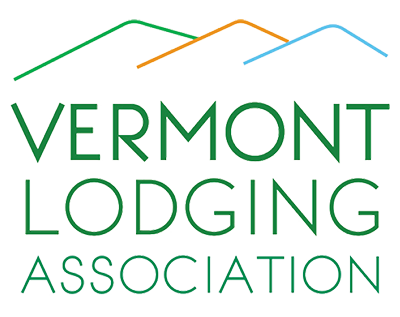Governor Scott’s Covid-19 Press Conference 2.9.21
Innkeepers are a busy bunch. To save you time, VLA attends Governor Scott’s Covid-19 Press Conferences and takes notes for you. Below is the summary from 2.9.21
The State passed the threshold of 13,000 Covid-19 cases with an increase of 90 cases since last week. Even so, cases have trended downward by about 30 percent since the most recent peak in January. Incidences and hospitalization are highest in Bennington and Rutland counties, which is likely attributable to community transactions. Notably, Vermont still has the lowest Covid-19 death toll in the country with a total of 186 deaths.
According to the CDC’s most recent data on vaccination pace, Vermont is ranked number 2 in the region and number 10 in the Nation in terms of speed. As Governor Scott explained, we are still in the first phase of the vaccine rollout. This means that eligibility remains limited to individuals in the 75+ age group and healthcare workers in the 1A group. The Governor’s administration has and will continue to intervene against those looking to circumvent the current guidelines by distributing vaccines to ineligible Vermonters. Registration for individuals in the 70+ age group will likely open by the end of the month.
About 32 percent of Vermonters in the 75+ age group have received vaccinations to date. In Israel, about 80 percent of people over 60 years have received first and second round doses of the vaccine. Looking to Israel as a model, Vermont can anticipate a downward trend in total cases and a more rapid decrease in cases among those who are 60 and older as vaccinations progress. Fatality rates have remained constant among the younger population in Israel and have decreased by about 32 percent among people who are over 60 years. Vermont should expect to see similar results in the weeks and months ahead.
Finally, the Federal Government has established a new program that will allow Walgreens stores to administer vaccines throughout the country, including 20 eligible locations in Vermont. Just this morning, White House officials informed state governors that the Federal Government will be distributing an extra 500,000 doses over the next three weeks, bringing the country to 11 million nationwide. This means about 500 more doses for Vermont. They also informed state governors of a plan to launch a new healthcare program, which will distribute about 250,000 vaccine doses to Federally Qualified Health Centers until they reach 1 million doses.
NOTES:
- Walgreens is administering a federally funded vaccine program slated to begin next week. There will be about 1,000 doses of the vaccine at 20 Walgreens locations in the State.
- 65,100 Vermonters have been vaccinated. 36,600 Vermonters have received their first dose and 28,500 Vermonters have received their second dose.
- 32 percent of Vermonters in the 75+ age group have been vaccinated.
- Individuals in group 1A will continue to have vaccine eligibility and hospitals will continue to be allocated vaccine doses to serve this group. No additional individuals will be added to this group.
- People who are not qualified have been getting vaccines—“this is unfortunate.” The administration sent out three healthcare notices acknowledging the eligible groups. The administration has and will continue to intervene against those who are looking to circumvent the guidance.
- Vermonters who are not yet eligible can get a step ahead by creating an account at www.healthvermont.gov/myvaccine. Creating an account early will ease the process of registering for a first dose. Governor Scott hopes to start registration for 70+ by the end of the month.
- A “prominent Vermonter” got some buzz on social media when he asked if and when grocery store workers would be considered high risk in terms of vaccination priority. Governor Scott emphasized that the State’s primary objective is protecting lives, which means individuals who are 75+ and healthcare workers will continue to have first priority.
- Vermont will join with marketplaces nationwide to provide continued qualified health plan enrollment through Covid-19. The special enrollment period begins on February 16, 2021 and lasts through May 16, 2021.
- New U.S. cases have fallen by 55 percent within the last 4 weeks. Additionally, the number of people hospitalized nationwide has decreased by over 30 percent from its most recent peaks.
- Death tolls remain high. Those who are dying from Covid-19 today likely contracted the virus in early January.
- National forecast shows that new cases and deaths will decrease through the month of February.
- 27 percent decrease in new cases in the region. The Governor’s administration anticipates seeing a decrease throughout the month of February and into March. By that time, Vermont will have made significant progress in getting people vaccinated.
- Increase of 90 cases in Vermont from last week, bringing the State past the 13,000 threshold. The case average is 30 percent down since its peak on January 13.
- Vermont cases are still disproportionately high in Bennington and Rutland counties, which is having an impact on the State’s average. The predominate cause for increased cases in these areas is likely community transmission in schools, hospitals, and long-term care facilities.
- Transmission from school student to adult is rare in Vermont. Cases in schools usually come from community transmission or from adult/faculty to students. The State loosened restrictions on youth recreational sports because outbreaks related to schools are rare.
- High risk cases: On average, 15.6 percent of cases are individuals over 65 years old. There has been considerable improvement among the most vulnerable population in long-term care facilities, which have only seen a total of five active outbreaks this week. Vermont has the lowest fatality rate per capita in the country.
- Hospitalization usage remains high across the State; however, the statewide forecast continues to show that the State is safely below the available statewide resources over the next 6 weeks. Hospitalizations are disproportionately high in Bennington and Rutland counties, where almost all of the State’s hospitalizations are located.
- Colleges across Vermont reported 91 new cases on campuses. Surpassed the total number of fall semester cases in the first three weeks of the spring semester restart.
- The CDC’s most recent data (released yesterday) on vaccination pace ranked Vermont number 2 in the Northeast and number 10 in the Nation in terms of speed.
- Early data out of Israel shows that close to 90 percent of older individuals have received their first dose of the vaccine and 80 percent are those individuals are fully vaccinated. Cases are generally trending downward but are decreasing more quickly among those who are 60 and older. Fatality rates in Israel have remained constant among the younger population and have decreased by about 32% among people who are over 60. Vermont anticipates similar results as vaccinations progress in the weeks and months ahead.
- 59 cases reported today, which is significantly lower than the typical 100–150 daily total. But unfortunately 3 additional deaths, bringing the total to 186. Daily hospitalizations have decreased to 53, and the seven-day positivity rate is at 1.7 percent.
- Other than Bennington and Rutland counties, Franklin County should also approach the virus offensively by testing as frequently as possible. Additional testing on Saturdays through the month of February, starting February 13, at Northshire Medical Clinic, Route 7A in Manchester, from 9:00am to 3:00pm.
- The State recommends that all those who gather with people outside of their household should get tested up to 2 days after the gathering and on day 7 after the gathering. Testing is even more critical for those who experience symptoms. For most people, it takes 4 days for the health department to receive their positive testing sample. This is because people decide not to get tested right away. For those that test as soon as they experience any mild symptom, such as a headache or dry cough, the health department can receive their positive sample within 24 to 48 hours. Test early!
- The State is working closely with partners to provide information and clinics to Vermonters who do not speak English. Prioritizing the BIPOC community aligns with CDC and Vermont State guidelines. The State and its community partners recognize the importance of outreach and education, including linguistically appropriate materials, for 65+ Vermonters living in multi-generational homes. These individuals are at a particularly high risk of contracting the virus. The coordinated effort aims to reach the most historically underserved communities in Vermont who have been disproportionately impacted by the pandemic.
- The Federal Government will be distributing an extra 500,000 doses over the next three weeks, bringing the country to 11 million nationwide. This means about 500 more doses for Vermont. Notably, the Federal Government is going to start counting the second dose of the Pfizer vaccine, which may skew the numbers. Having the three week supply is key for the State’s planning regardless. The Federal Government is also going to launch a new healthcare program which will distribute about 250,000 vaccine doses to Federally Qualified Health Centers until they reach 1 million doses. If people choose not to use their second dose within 42 days, it can be used as a first dose.
- As Governor Scott explained, Vermont and other states appreciate the increase in vaccines. However, every time the Federal Government implements a new program, the states are faced with a new level of complexity in terms of satisfying both federal and state requirements.
- More good news: Pfizer announced to the Federal Government that they’re going to release 50 million more doses before the end of March. This will bring the total number of vaccines from 100 million to 150 million. There are currently no updates on the Johnson & Johnson vaccine.
- Update on 1099 exposure at the Department of Labor: The administration takes this breach very seriously. Although this incident only involved some 1099s, the administration will provide identity protection services to all 2020 insurance claimants at no cost to the individual. More information on this to come. After enrollment, protection will be retroactive to the date of the breach. The cost to the State will include the cyber insurance deductible of 250,000, but insurance will cover the rest.
- Close to 2,500 people currently in the Hotel/Motel Program designed to mitigate homelessness. This is a temporary measure, but the long-term plan is to transition to community-based programs that provide permanent housing and services to individuals and families. The Hotel/Motel Program is not going to end—that would put people in a dire situation. But federal funding is going to run out and it will become too costly to continue beyond the pandemic.

